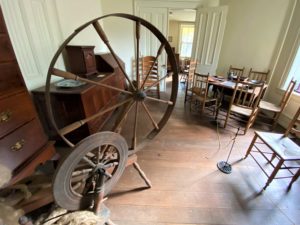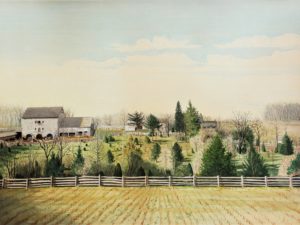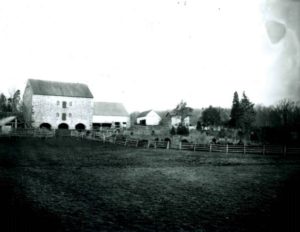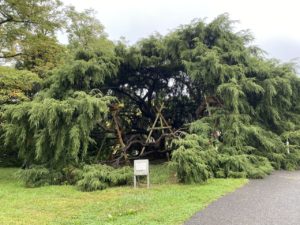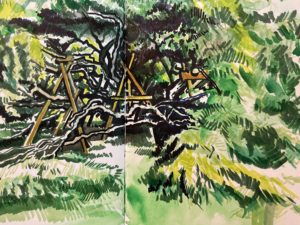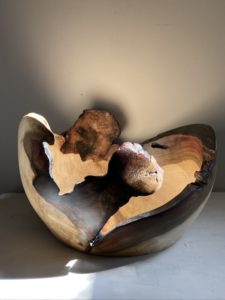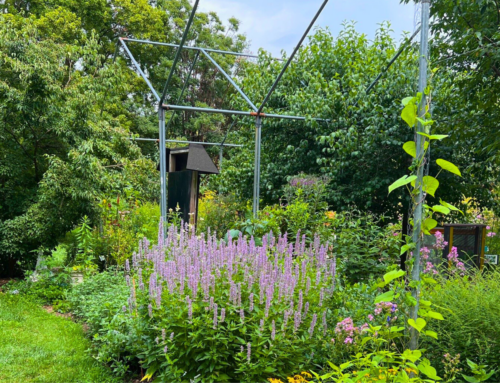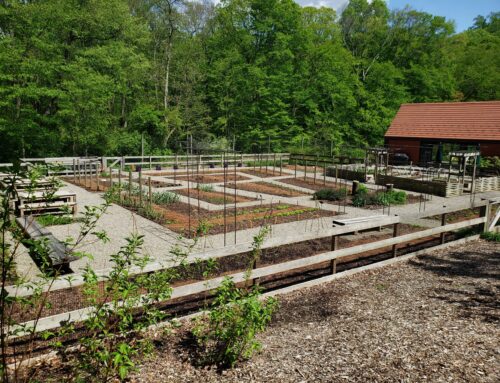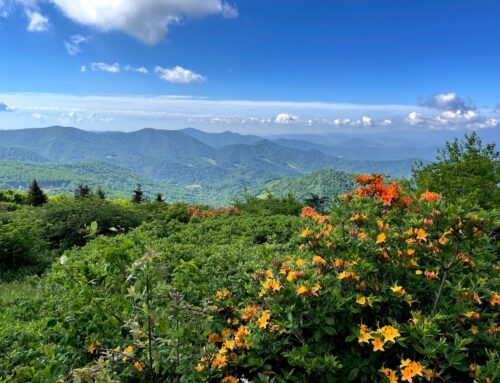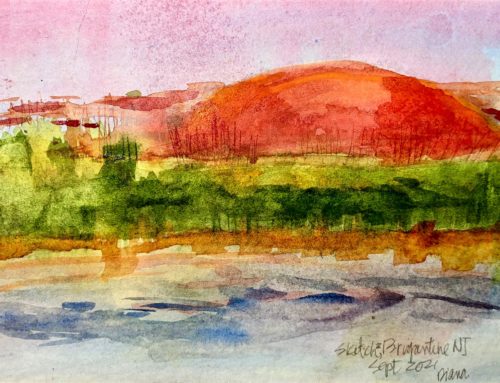In the late 20th century, literature and art historical scholars coined the phrase “ecocriticism” to describe the relationship between art and its physical environment. In recent years, it’s even expanded to include discussion of the environmental impact of art and artists for even “non-human” subjects and viewers. What more perfect concept could there be to discuss art on the campus of Tyler Arboretum? In previous posts of this series, you have heard about the science behind the beauty of the forms we see in nature, but now we have the chance to celebrate the people that use this beauty and translate it into their own art.
Throughout art history, artists have been inspired by the unique elements of their physical surroundings, by the light and the vegetation, by the animals native to the environment, by the buildings, and by the people and current events that weave in and around those surroundings. Rich with historical viewsheds, Tyler has inspired artists of all kinds over its long history. Tyler is home to a diverse set of environments: meadows, dense forest canopies, curated gardens, and the legacy of a series of homesteads that reflect the generations of inhabitants that called these lands home.
Luckily, the rich history and legacy of the Quaker family that lived here on the property for many generations include some very interesting art. We are so lucky to have a small collection of their belongings that add to the story of the landscape in interesting and unusual ways. Nearly every object in Tyler’s historical collection has a provenance right here at Tyler — beautiful early American furniture created by the family for the family, and a few notable items that help us think about Tyler’s history related to art are worthy of discussion here.
American Art has a rich history of en plein air painting, in which the artists paint their pictures outdoors, in the fresh air and usually with a realistic style. Over the years and still today, Tyler has encouraged these artists to come and paint by hosting en plein air festivals and classes where artists would set up their easels to try to capture the beauty of our landscape. The earliest example of landscape painting in Tyler’s collection is a watercolor in Lachford Hall that depicts the early stages of the Arboretum plantings. The painting is estimated to be from around 1865, by an unknown artist. Perhaps painted by a traveling or itinerant painter, we know it was framed by F.F. Zimmerman on 6 E. Front Street, the current home of the Media Fire Company. The historic bank barn that now houses our events and weddings can be seen from behind, with animals in the stalls, while a large split-rail fence surrounds what we now call the “Old Arb”, but was clearly then a nursery of small trees.
Fortunately for the modern viewer, Tyler’s collection also contains several old glass-plate negatives, which allow us to examine the changes to our favorite trees and historic buildings over time. Jacob Minshall purchased the camera used in these early photographs in 1869, with many of their subjects being the local meeting houses. This photo is special to staff at Tyler with a similar view of the Old Arb as the 1865 watercolor, which shows a glimpse of the barn and some of the historic Painter Trees when they were still small. The glass plate negative also gives us an idea of some of the artistic license that was used to fit most of what we call Home Farm into the frame of the watercolor.
Tyler is so fortunate to have a long history with truly wonderful artists and photographers. We know from past surveys that many people love Tyler because of the sanctuary from daily life the property provides, and I would argue that creative people need even more opportunities for sanctuary and recovery than people in other fields. Tyler is thrilled to count so many amazing creative people in its community and we want to highlight some artists that are inspired by Tyler, and leave us inspired as well. Board Member, Dave Charlton, and the many volunteer photographers contribute their eye and their lens to help us interpret the beautiful forms and viewsheds at the A trees (??) and my personal favorites, the Kentucky Coffee Tree and the Weeping Hemlock. Both, with their craggy outstretched limbs, defy notions of conventional beauty – no fluffy spring blooms or smooth bark reaching towards the heavens – instead offering twists, turns, and texture to interest the viewer.
Thinking of the Weeping Hemlock and the Kentucky Coffee Tree brings to mind several wonderful artists that are members and friends of the Arboretum. Artist and Member Steph Untz can be seen at the Arboretum regularly, creating interesting sketches that are often translated into bright, wonderful paintings. Highlighting the movement and light, she captures the Arboretum with a dash of whimsy.
Wood artists Bethany Formica and Conrad Bender of Sawdust Siren have taken wood from trees that had naturally fallen (or had to be removed because of storm damage) and turned them into beautiful objects. Their glorious, sculptural bowl from our Slingshot Tulip recently was part of our Tyler at Twilight auction.
We hope that this brief meditation on art at Tyler will inspire the reader to come back, to take their own photos, make their own sketches, and most of all, find the sanctuary and inspiration we all need as we reinvent our lives within the challenges of our modern world.


